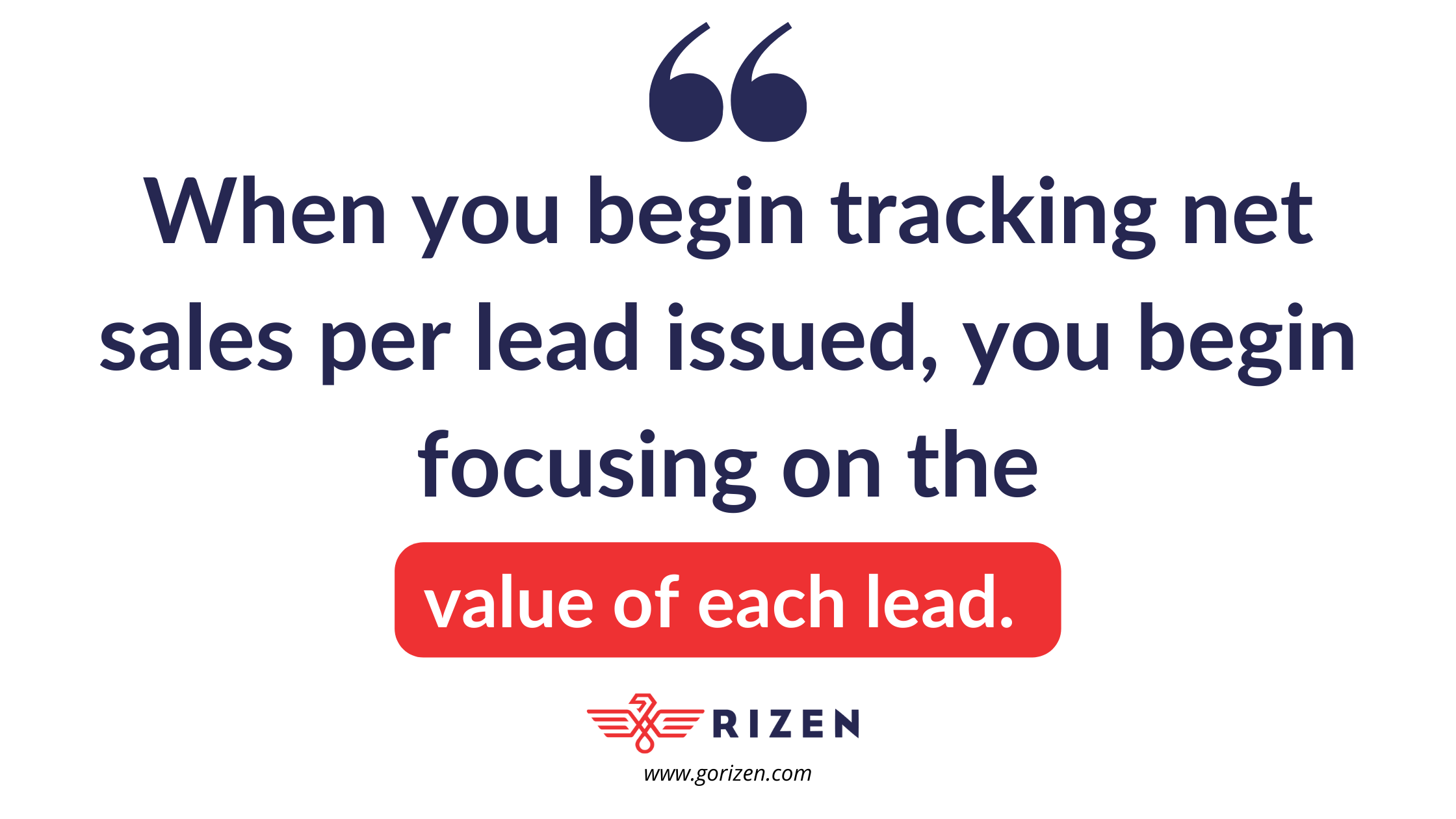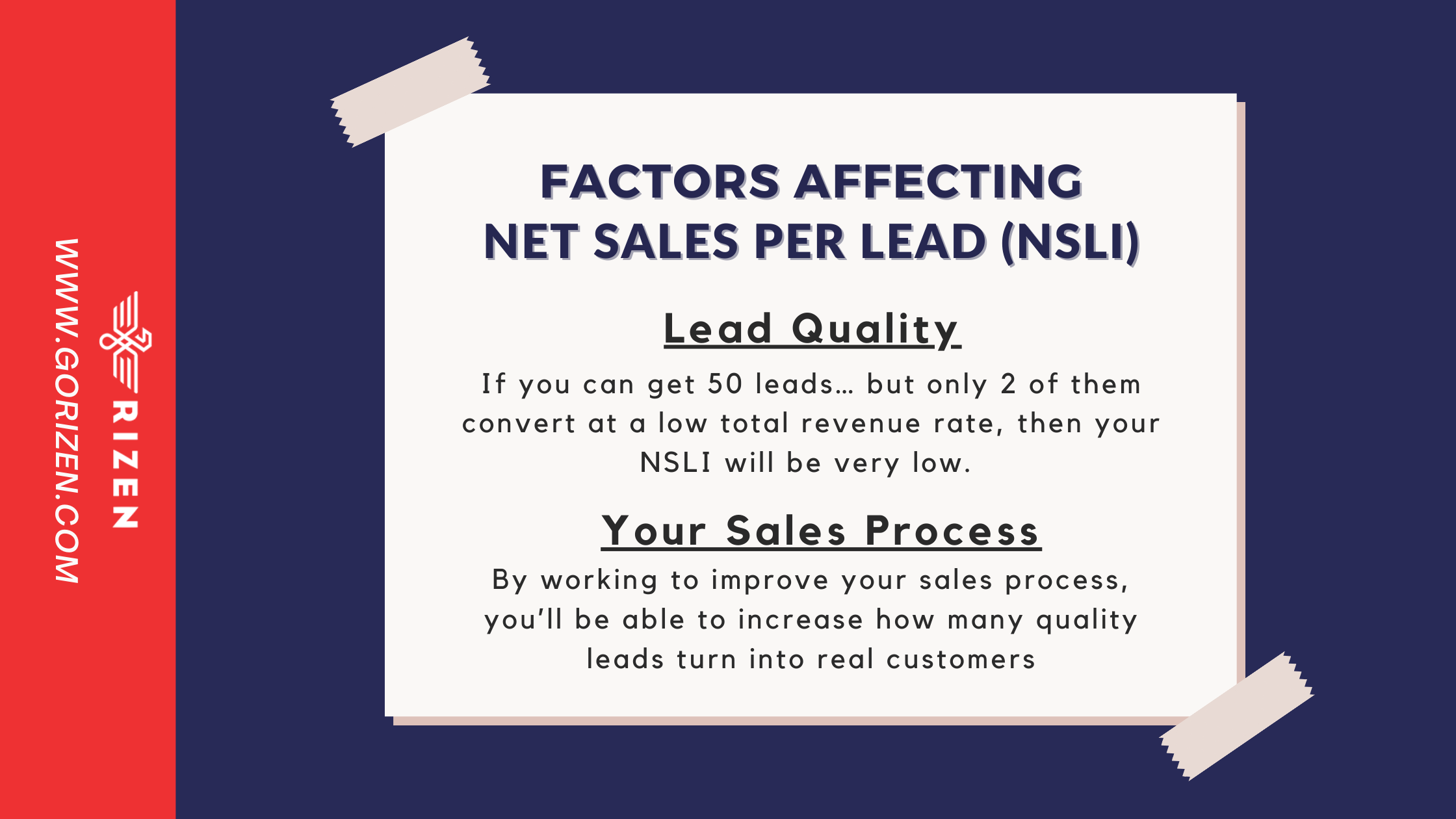Window and door installation is one of the biggest opportunities for business-minded individuals looking for a steady, in-demand career.
In fact, according to Verified Market Research, the home services market size is projected to grow to $1.82 billion by 2030!
Considering the market was $370 million in 2021, it’s projected to grow at a compound annual growth rate (CAGR) of 21.14% over the next nine years.
This is good news if you’re a current window and door installer. However, just because there’s opportunity in the industry doesn’t mean everyone’s easily reeling in new leads.
If you’re struggling to generate leads for your business, then there’s a pivotal metric you need to start tracking: net sales per lead issued (NSLI).
Whether you’re brand new to the window and door industry or want to scale your business, this guide is for you!
In this article, we kick off our three-part series on how window companies can effectively measure their lead generation efforts by looking at the importance of measuring net sales per lead.
Table of Content
What Is a Lead?

Before we dive into net sales per lead issued, let’s back up a bit. What exactly is a lead?
In business, a lead—or sales lead—is a potential customer who’s shown interest in what your company offers.
Organizations deploy both salespeople and marketers to convert people who are interested in their products (leads) into paying customers. Businesses work on converting leads into customers through various strategies, including marketing and relationship building.
By focusing on increasing leads, companies can, in turn, increase the number of sales.
What is a Net Sales Per Lead?

While it’s important to track leads, what’s even more important is to track net sales per lead issued.
Net sales per lead issued, or NSLI, is a calculation that helps track a salesperson's or business's overall performance.
How Is Net Sales Per Lead Calculated?
Net sales per lead issued (NSLI) is calculated by taking your total revenue and dividing it by the total number of leads.
For instance, let’s say you bring in a total of 52 leads this month.
- From those leads, you generate $480,500 in sales.
- You would take $480,500 divided by 52.
In this case, your net sales per lead issued (NSLI) is $9,240 per lead.
What’s the Difference Between NSLI & Close Rate?
NSLI sales shouldn’t be confused with a close rate which is a common metric salespeople use. Your close rate is calculated by taking your total deals closed divided by total leads.
For instance, let’s say of the 52 leads you got this month, 9 of them actually converted into customers. That means you would take nine divided by 52 to get 17.3%.
In this example month, your close rate is 17.3%, while your NSLI is $9,240.
Why Net Sales Per Lead Is the Only Metric That Really Matters

Your leads are only as good as your ability to convert them.
Your close rate is a vanity metric if each deal closed isn’t bringing in significant revenue.
Net sales per lead issued is the most important sales metric to track since it breaks down the value of each lead by the total revenue generated by all leads.
1. It Helps You Measure Marketing Effectiveness
If your marketing department sees that their efforts resulted in 20 more sales this month, it may be easy to celebrate.
But… if your total revenue went down this month… is there really something worth celebrating?
NSLI is a metric that considers both your total revenue and the value of the lead. This ensures that you’re getting the most out of each lead you bring into your sales funnel—which ultimately leads to higher overall revenue.
2. It Keeps Veteran Sales Members Motivated
It’s not always easy to stay motivated in business—especially as a salesperson. You’re constantly looking for ways to convert customers and generate sales.
Lofty sales targets can be intimidating month to month—especially if a client falls through the cracks. It’s easy to pre-judge certain leads and get jaded about whether or not someone will convert or not.
When you begin tracking net sales per lead issued, you begin focusing on the value of each lead.
You understand that you will get sales. It’s a matter of time. And you know that it’s not a waste of time to reach out to yet another lead even if that specific lead doesn’t convert. They’re still worth your NSLI. In the example above, each lead you reach out to is worth $9,240 to you even if you don’t close them.

3. It Accounts for Factors Outside the Salesperson’s Control
Salespeople are human. While motivated, dedicated salespeople will generate more sales than others, there are still factors that are outside a salesperson’s control.
For instance, some months, salespeople may convert several clients who end up canceling for reasons outside the salesperson’s control, resulting in low sales.
Or, maybe a pre-closing deal was in the works for $500,000, but your lead’s budget was cut, so now it’s only $80,000.
By tracking NSLI, you can iron out these bumps in the road that are outside the salesperson’s control to ensure they stay the course and focus on nurturing leads.
What Factors Affect Net Sales Per Lead?

Net sales per lead consider two main factors: the number of leads you generate and the total sales from those leads.
So, what factors impact your NSLI the most?
1. The Quality of Leads
The biggest impact on NSLI Sales are the quality of leads you generate. If you can get 50 leads… but only 2 of them convert at a low total revenue rate, then your NSLI will be very low.
However, optimizing your lead generation strategy can increase the number of quality leads to increase your NSLI.
2. The Sales Process
The second biggest factor that affects your NSLI is your sales process.
Even if you can generate quality leads, it doesn’t mean you’ll be able to close them.
Without a proper sales process, high-quality leads could be left by the wayside. By working to improve your sales process, you’ll be able to increase how many quality leads turn into real customers—and how much revenue you generate from each customer, improving your NSLI.
After Implementing NSLI: What Now?

Take Control of Your NSLI Sales Growth
Once you start tracking your NSLI sales, what’s next?
The next step is setting clear NSLI goals to drive business growth. Let’s say your average NSLI over the past six months was $6,300—you should set a target, like increasing it to $10,000.
But setting a goal isn’t enough—you need a proven strategy to achieve it.
How Rizen Helps You Boost NSLI Sales
If you're a window and door dealer looking to generate more leads, improve lead quality, and increase revenue, Rizen can help.
We’ve developed SmartLeadGen—a specialized window lead generation system designed for home services companies. With SmartLeadGen, you can:
✅ Scale faster with a steady flow of high-quality leads
✅ Save 10+ hours per week on marketing and sales tasks
✅ Take time off while your business continues to grow
Ready to increase your NSLI sales and take your business to the next level? Contact Rizen today!
Stay Tuned for More NSLI Sales Insights
In the next article in our NSLI sales series, we’ll explore what to do if your company’s NSLI is too low—and how to fix it fast.
More Growth Resources for Window & Door Installers
📌 The Plain Truth on How to Sell Windows & Doors (Growth Guide)
📌 Follow-Up Emails for Closing More Window Leads (Free Templates)
📌 5 Must-Have Project Photos/Videos After Every Installation
📌 The Hand-Off Resource for Better Post-Project Photos (Checklist)
📌 Why Most Window Leads Don’t Convert—And How to Fix It
📌 How a Call Center Can Boost Your Window & Door Leads
📌 Improve Your Lead Response Times with These Tips
📌 Do People Actually Click Window & Door Ads on Google?
📌 Website Layout Tips for Better Window & Door Marketing
📌 4 Signs a Window or Door Customer Isn’t Worth Your Time
📌 The Secret Formula for Handling Bad Reviews (Webinar)
Want expert guidance on growing your NSLI sales? Let’s talk!







No Comments Yet
Let us know what you think